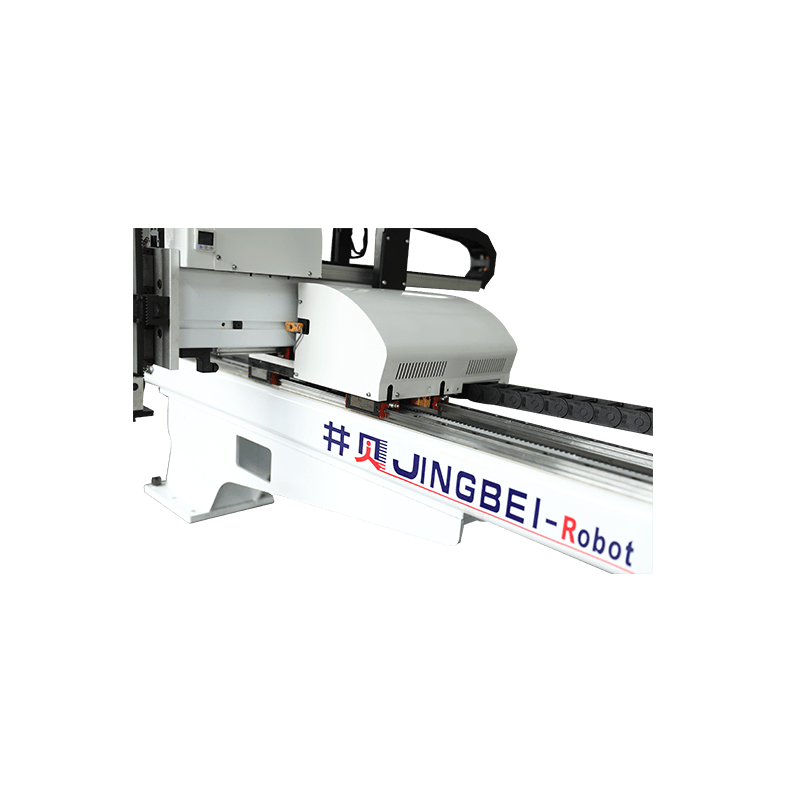

There are four main types of driving mechanisms used for manipulators: hydraulic drive, pneumatic drive, electrical drive and mechanical drive. Among them, hydraulic drive and pneumatic drive are the most used.
Hydraulic drive
The manipulator with hydraulic drive usually consists of a hydraulic motor (various oil cylinders and oil motors), servo valves, oil pumps, oil tanks, etc., which form a driving system, and it was operated by actuators. Usually it has a great taking ability (up to several hundred kilograms). It is characterized by compact structure, smooth movement, impact resistance, vibration resistance and good explosion resistance. However, hydraulic components require high manufacturing accuracy and good sealing performance. Otherwise, oil leakage will pollute the environment.
Pneumatic drive
The driving system of the pneumatic drive is usually composed of air cylinders, air valves, air tanks and air compressors. It has features of having convenient air source, rapid action, simple structure, low costs and easy maintenance. However, it is difficult to control the speed, and the air pressure cannot be too high, resulting in taking ability being low.
Electric drive
Electric drive is the most commonly used drive mode for manipulators. It is characterized by convenient power supply, fast response, great driving force (The weight of the joint type has reached 400kg.), convenient signal detection, transmission and processing as well as a variety of flexible control schemes. The driving motor generally adopts a stepping motor, and the direct current servo motor (AC) is the main driving method. Reducing mechanisms such as harmonic drive, RV cycloid pinwheel drive, gear drive, screw drive and multi-bar mechanism, etc. is usually used due to the high speed of the motor. Some manipulators have begun to use a high-torque, low-speed motors without a reducing mechanism for direct drive (DD), which can not only simplify the mechanism, but also improve the control accuracy.
Mechanical drive
The mechanical drive is only used for fixed movements. Generally, a cam link mechanism is used to achieve the purpose of the prescribed action. It is characterized by reliable action, high working speed and low costs, but it is not easy to adjust. There are also other combination drives, that is, liquid-gas or electric-hydraulic combination drives.
(3) Control systems
The elements of manipulators' control are working sequence, arrival positions, action time, movement speed, acceleration and deceleration, etc. The control of the manipulator is divided into two types: point location control and continuous trajectory control. The control system can adopt digital sequence control according to the requirements for the action. A program must be firstly compiled and saved, then control the manipulator to operate according to the prescribed program.
There are two ways to save programs: separate storage and centralized storage. Separate storage is to save the information of various control factors in two or more storage devices, such as sequence information stored in the pin plate, cam drum, perforated belt and position information stored in the time relay and constant speed drum. Centralized storage is to save all the information of various control factors in a storage device, like magnetic tape, magnetic drum and so on. This method is used in situations where sequences, positions, time and speeds must be controlled at the same time, that is, under continuous control.
Among them, the latch plate is used in occasions where the program needs to be changed quickly. To change a program, you only need to change a latch plate, and the same latch plate can be used repeatedly.
For manipulators with complex movements, a reproducible control system should be adopted. As for more complicated manipulators, digital control systems, small computers or microprocessor-controlled systems should be used. The latch plate is used most for the control system, followed by the cam drum. It is equipped with many cams, and each cam is assigned to a motion axis, and the drum moves one cycle to complete a circulation.
